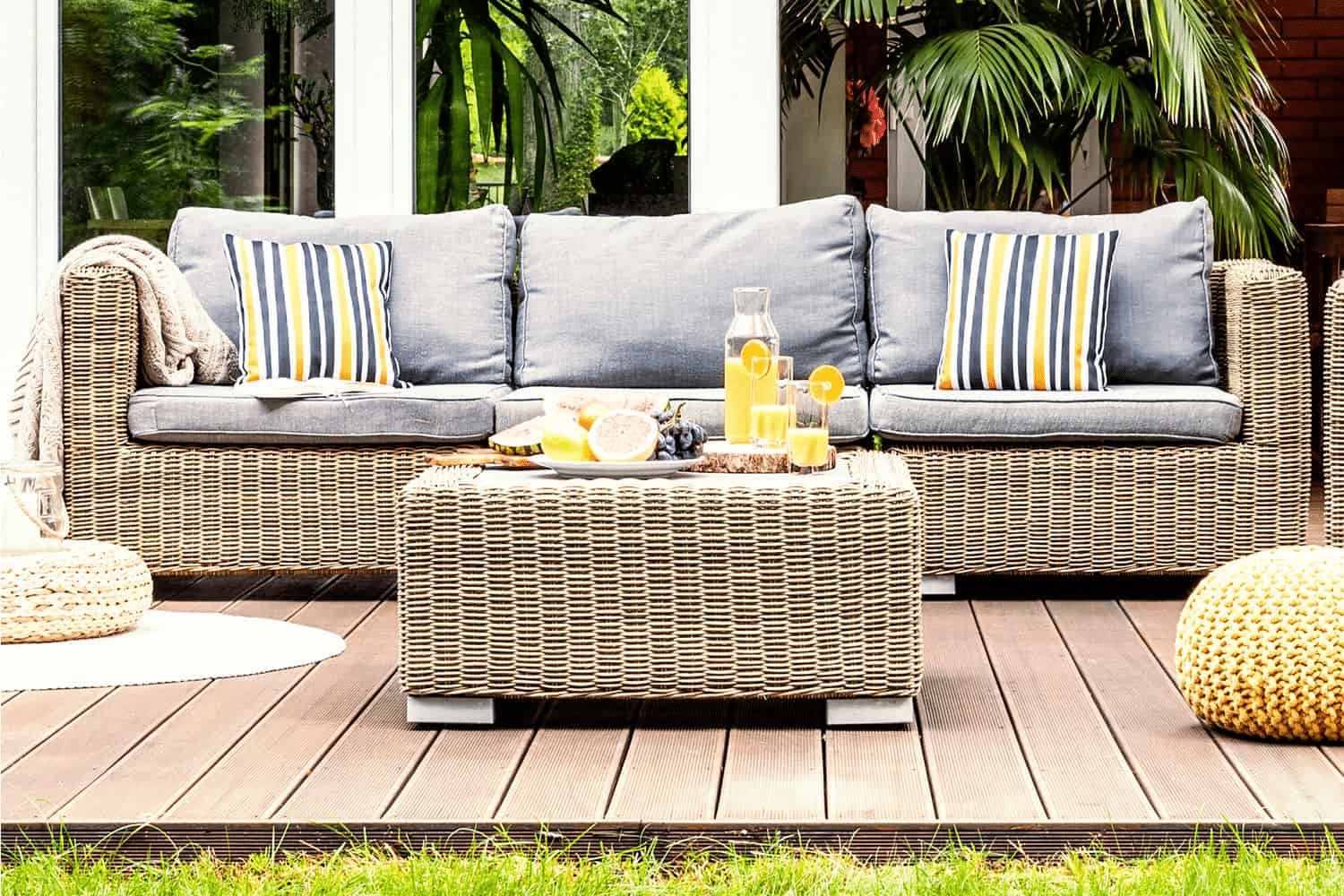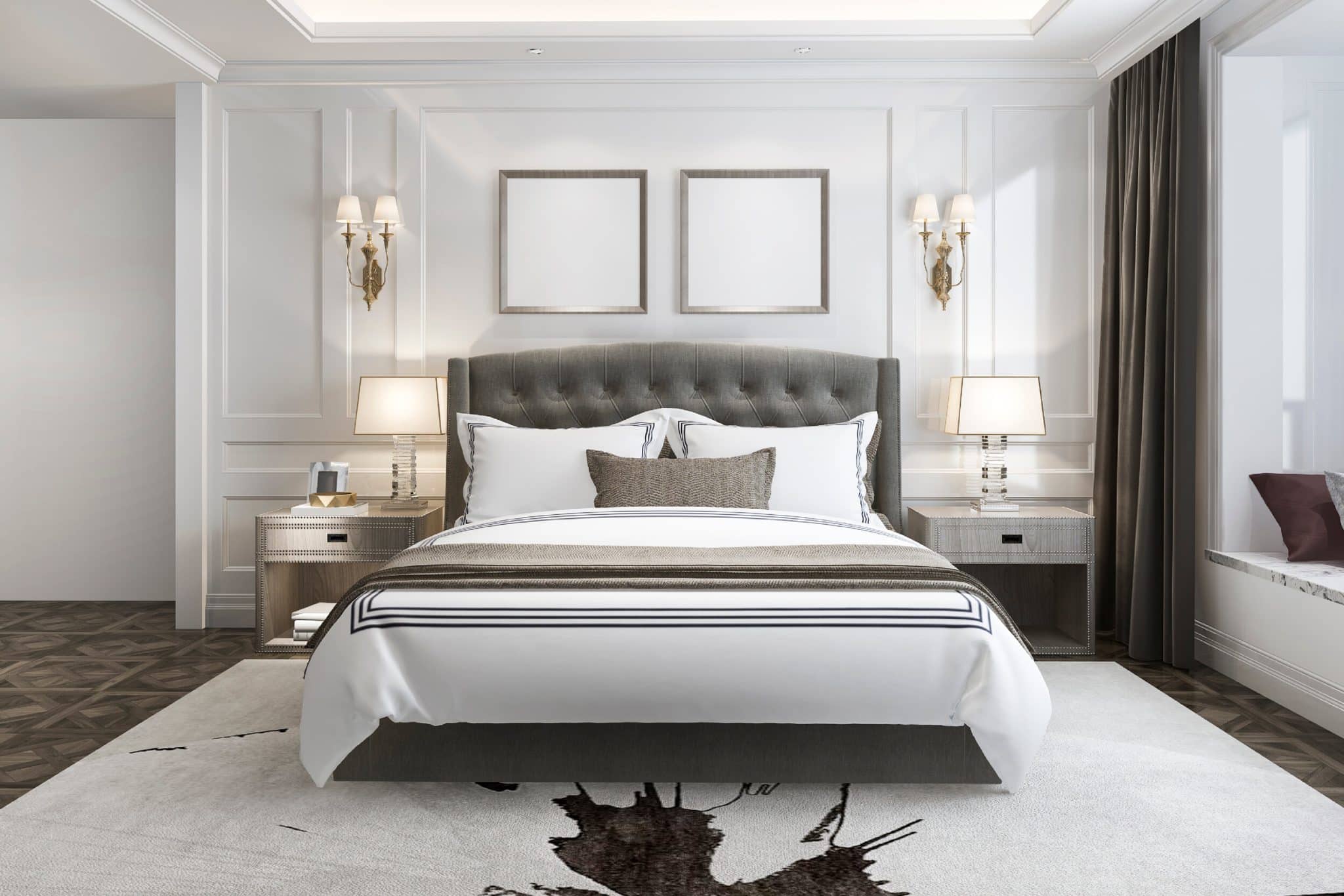If you’re like most people, you spend a significant portion of your day in the office. A clean and organized workspace is essential for a productive and healthy work environment. However, office cleaning in Perth can be daunting, especially if you don’t have a clear plan of action. That’s where an office cleaning checklist comes in.
An office cleaning checklist is a comprehensive list of essential tasks that need to be completed to maintain a clean and inviting workplace. The checklist can be broken down into daily, weekly, monthly, and seasonal tasks to ensure that all office areas are cleaned and maintained regularly.
By following a checklist, you can ensure that your workplace remains spotless and well-maintained, reducing germs and creating a productive environment for everyone.
In this article, we’ll provide you with an essential office cleaning checklist for a spotless Perth workplace. We’ll cover everything from decluttering and organizing to cleaning and disinfecting common areas, restrooms, and kitchen areas. Whether you’re a small business owner or an office manager, this checklist will help you maintain a clean and healthy work environment for your employees and visitors.
Daily Cleaning Tasks

Desks and Workstations
Desks and workstations are where your employees spend most of their time. Therefore, it is essential to keep them clean and tidy. Encourage your employees to keep their desks organized and free from clutter. Here are the daily cleaning tasks you should perform:
- Wipe down all surfaces with a disinfectant spray or wipe.
- Clean computer monitors, keyboards, and mice.
- Dust all surfaces, including office equipment and decorations.
- Empty all trash and recycling bins.
Floors and Carpets
Your office floors and carpets can quickly accumulate dirt and debris. Regular cleaning can help maintain their appearance and extend their lifespan. Here are the daily cleaning tasks you should perform:
- Vacuum all carpets and rugs.
- Sweep and mop all hard floors.
- Clean any spills or stains immediately.
Trash and Recycling Bins
Emptying the trash and recycling bins is a crucial daily cleaning task. Overflowing bins not only look unsightly but can also create unpleasant odors and attract pests. Here are the daily cleaning tasks you should perform:
- Empty all trash and recycling bins.
- Replace liners in all bins.
- Implement regular document shredding to protect sensitive information and maintain a secure office environment.
Performing these daily cleaning tasks can help maintain a clean and healthy workplace. Encourage your employees to help keep their workspaces clean and tidy to promote productivity and maintain cleanliness.
Weekly Cleaning Responsibilities

Restrooms and Kitchens
Restrooms and kitchens are some of the most frequently used areas in the office, and they require special attention during weekly cleaning. Make sure to clean and disinfect all surfaces, including sinks, toilets, and countertops. Refill soap dispensers, paper towels, and toilet paper to ensure that your restrooms and kitchens are always well-stocked. Additionally, sweep and mop the floors to keep them clean and free of debris.
Windows and Glass Surfaces
Clean windows and glass surfaces can make a huge difference in the appearance of your office. Make sure to wipe down all glass surfaces, including mirrors and windows, to remove any smudges or fingerprints.
This will not only make your office look more organized, but it will also let in more natural light, which can improve the well-being of your employees.
Furniture and Upholstery
Finally, don’t forget to clean your furniture and upholstery. Dust and vacuum all surfaces, including chairs, desks, and cabinets, to remove any dirt or debris.
If you have upholstered furniture, consider using a fabric cleaner to remove any stains or spills. This will not only keep your office looking clean and organized, but it will also help to extend the life of your furniture.
By following these weekly cleaning responsibilities, you can maintain a clean and organized workplace that promotes efficiency and well-being.
Monthly Deep Cleaning Schedule

Carpet and Upholstery Care
Carpets and upholstery are high-traffic areas and can quickly accumulate dirt, dust, and other particles. To keep them clean, it’s recommended to vacuum them regularly. However, a deep cleaning is required to remove stubborn stains, dirt, and bacteria.
Professional carpet cleaning is recommended for deep cleaning carpets. It’s a process that involves using specialized equipment and cleaning solutions to remove dirt and stains. Professional carpet cleaning can also help to extend the life of your carpet.
For upholstery, it’s recommended to use a vacuum cleaner with an upholstery attachment to remove dust and dirt. For deep cleaning, you can use a steam cleaner or hire a professional upholstery cleaning service.
Appliances and Equipment
Office equipment such as printers, computers, and telephones can be a breeding ground for bacteria and germs. To keep them clean, wipe them down regularly with a disinfectant solution.
For a deep clean, it’s recommended to remove the dust and debris that accumulates inside the equipment. You can use compressed air to blow out the dust or hire a professional cleaning service to do it for you.
Storage and Common Areas
Storage areas and common areas, such as break rooms and conference rooms can quickly become cluttered and dirty. To keep them clean, it’s recommended to schedule a deep cleaning once a month.
During a deep clean, you should remove everything from the storage area and clean the shelves and drawers. For common areas, wipe down tables, chairs, and other surfaces with a disinfectant solution.
By following a monthly deep cleaning schedule, you can ensure that your office is free from allergens, bacteria, and other harmful substances. It’s also a great way to extend the life of your office equipment and keep your office looking its best.
Cleaning Supplies and Best Practices

Choosing the Right Products
Choosing the right cleaning products is crucial for ensuring effective cleaning while maintaining the health and safety of your employees. When selecting cleaning supplies, consider the type of surface you are cleaning, the level of dirt and grime, and the environmental impact of the product.
It is best to use eco-friendly cleaning products that are safe for the environment and your employees. These products are made from natural ingredients and do not contain harsh chemicals that can cause health problems. When choosing cleaning products, look for certifications such as Green Seal or EcoLogo to ensure that they are environmentally friendly.
Maintaining Inventory and Equipment
Maintaining an inventory of cleaning supplies and equipment is essential for ensuring that you have everything you need to keep your office clean and tidy. Keep track of your inventory and reorder supplies before they run out. This will help you avoid running out of essential supplies and ensure you can complete cleaning tasks efficiently.
It is also essential to maintain your cleaning equipment regularly. Regular cleaning and maintenance will ensure that your equipment is functioning correctly and will prolong its lifespan. Make sure to follow the manufacturer’s instructions for cleaning and maintaining your equipment.
Implementing Green Cleaning Techniques
Implementing green cleaning techniques is crucial for maintaining a healthy and safe work environment. Green cleaning involves using environmentally friendly products and techniques to reduce the impact of cleaning on the environment and your employees’ health.
Some green cleaning techniques include using microfiber cloths instead of paper towels, using natural cleaning products, and reducing water usage. These techniques not only benefit the environment but also improve the hygiene and cleanliness of your office.
In summary, choosing the right cleaning supplies, maintaining inventory and equipment, and implementing green cleaning techniques are essential for maintaining a clean and healthy work environment. By following these best practices, you can ensure that your office is spotless and your employees are safe and healthy.
Frequently Asked Questions
What items should be included in a daily office cleaning routine?
To keep your office spotless, you should include the following items in your daily cleaning routine:
- Disinfect frequently touched surfaces such as desks, keyboards, phones, and doorknobs.
- Clean and sanitize restrooms, including toilets, sinks, and mirrors.
- Empty trash and recycling bins.
- Dust surfaces, including desks, shelves, and windowsills.
- Sweep and mop floors.
How can I ensure all office areas are covered in the cleaning plan?
To ensure the cleaning plan covers all areas of the office, create a comprehensive cleaning checklist that includes all tasks and areas to be cleaned. Assign specific tasks to employees or a professional cleaning service, and make sure everyone knows their responsibilities.
What are the best practices for maintaining a hygienic office environment?
Maintaining a hygienic office environment requires a combination of good hygiene practices and regular cleaning. Here are some best practices to follow:
- Encourage employees to wash their hands regularly and provide hand sanitizer throughout the office.
- Use disinfectant cleaners to wipe down surfaces, including desks, chairs, and doorknobs.
- Provide tissues and encourage employees to cover their mouths and noses when coughing or sneezing.
- Regularly clean and sanitize restrooms, including toilets, sinks, and floors.
Which tasks should be prioritized in a weekly office cleaning schedule?
In a weekly office cleaning schedule, you should prioritize the following tasks:
- Vacuuming and mopping floors.
- Dusting surfaces, including desks, shelves, and windowsills.
- Cleaning and sanitizing restrooms, including toilets, sinks, and mirrors.
- Emptying trash and recycling bins.
- Cleaning kitchen and break room areas, including appliances and countertops.
How often should deep cleaning be performed in an office setting?
Deep cleaning should be performed in an office setting at least once a year, but it may be necessary to do it more frequently depending on the size of your office and the number of employees. Deep cleaning involves cleaning hard-to-reach areas, such as behind furniture and equipment, and may require specialized equipment and cleaning solutions.
What are some eco-friendly cleaning solutions for office spaces?
Several eco-friendly cleaning solutions can be used in office spaces, including:
- Vinegar and water solution for cleaning windows and mirrors.
- Baking soda and water solution for cleaning sinks and toilets.
- Lemon juice and baking soda solution for cleaning countertops.
- Microfiber cloths for dusting and cleaning surfaces.
- Natural air fresheners, such as essential oils or plants.
By using eco-friendly cleaning solutions, you can reduce your environmental impact while still maintaining a clean and hygienic office space.
Maintaining a spotless workplace in Perth is crucial for fostering a productive, healthy, and welcoming environment. A well-structured office cleaning checklist ensures that every corner of your workspace receives the attention it needs, from daily desk tidying to periodic deep cleaning tasks.
By following this comprehensive guide, you can enhance employee well-being, impress clients, and uphold the professional image of your business. Embrace the power of a clean office and experience the positive impact it brings to your team’s morale and productivity. Remember, a pristine workplace is not just about aesthetics—it’s about creating a thriving, efficient, and harmonious working atmosphere.








 British Wholesales is the go-to destination for finding high-quality large cushion pads. British Wholesales offers an extensive selection of large cushion pads. You can choose from a variety of sizes to suit every taste. Luxurious feather-filled cushion pads offer multiple features. Quality is paramount at British Wholesales.
British Wholesales is the go-to destination for finding high-quality large cushion pads. British Wholesales offers an extensive selection of large cushion pads. You can choose from a variety of sizes to suit every taste. Luxurious feather-filled cushion pads offer multiple features. Quality is paramount at British Wholesales.
 The foundation of a comfortable bedroom is a good mattress. The right mattress can make all the difference in achieving restful sleep. It’s essential to choose one that suits your sleeping style and offers the right balance of support and comfort.
The foundation of a comfortable bedroom is a good mattress. The right mattress can make all the difference in achieving restful sleep. It’s essential to choose one that suits your sleeping style and offers the right balance of support and comfort. Bedding is another vital element in creating a comfortable bedroom. High-quality sheets, duvet covers, and blankets can make a significant difference in your sleep experience.
Bedding is another vital element in creating a comfortable bedroom. High-quality sheets, duvet covers, and blankets can make a significant difference in your sleep experience. Light exposure can significantly affect your ability to fall asleep and stay asleep.
Light exposure can significantly affect your ability to fall asleep and stay asleep.  Lighting plays an important role in setting the mood and creating a comfortable bedroom atmosphere. Soft, ambient lighting can make your space feel warm and inviting.
Lighting plays an important role in setting the mood and creating a comfortable bedroom atmosphere. Soft, ambient lighting can make your space feel warm and inviting.
 Don’t hesitate to experiment with sizes and heights when decorating with vases, as this can create interest and depth in your arrangement. Try mixing
Don’t hesitate to experiment with sizes and heights when decorating with vases, as this can create interest and depth in your arrangement. Try mixing  A timeless way to showcase vases is by filling them with flowers. Flowers enhance the beauty and vibrancy of your living space and offer numerous health advantages, such as reducing stress levels and boosting mood. Try out arrangements in your vases to match each season throughout the year.
A timeless way to showcase vases is by filling them with flowers. Flowers enhance the beauty and vibrancy of your living space and offer numerous health advantages, such as reducing stress levels and boosting mood. Try out arrangements in your vases to match each season throughout the year. For an elegant appearance, experiment with combining your vases with books. Position a hardcover book vertically beside your vase to create a backdrop that highlights the beauty of the floral arrangement or display. This pairing adds intrigue and makes a chic statement in any environment.
For an elegant appearance, experiment with combining your vases with books. Position a hardcover book vertically beside your vase to create a backdrop that highlights the beauty of the floral arrangement or display. This pairing adds intrigue and makes a chic statement in any environment. Feel free to incorporate color into your
Feel free to incorporate color into your  Simplicity is vital. Strategically placing a vase can be a striking decoration that captures attention effortlessly. Opt for a vase with captivating patterns or distinct shapes to make it eye-catching.
Simplicity is vital. Strategically placing a vase can be a striking decoration that captures attention effortlessly. Opt for a vase with captivating patterns or distinct shapes to make it eye-catching.
 Numerous
Numerous  For those seeking pieces that seamlessly blend style with design elements, the design boutiques in Pompano Beach offer an excellent experience. These venues curate cutting-edge furniture collections designed for minimalist preferences.
For those seeking pieces that seamlessly blend style with design elements, the design boutiques in Pompano Beach offer an excellent experience. These venues curate cutting-edge furniture collections designed for minimalist preferences. A trip to Pompano Beach would only be complete with delving into its flea markets. These markets allow visitors to find affordable treasures and showcase rare and unique furniture pieces waiting for you to uncover.
A trip to Pompano Beach would only be complete with delving into its flea markets. These markets allow visitors to find affordable treasures and showcase rare and unique furniture pieces waiting for you to uncover.
 Missing teeth pose a multitude of challenges beyond aesthetics. Here are some significant drawbacks to consider:
Missing teeth pose a multitude of challenges beyond aesthetics. Here are some significant drawbacks to consider: Dental implants offer a groundbreaking solution to overcome these challenges. These tiny, biocompatible titanium posts are surgically placed in your jawbone, acting as artificial tooth roots.
Dental implants offer a groundbreaking solution to overcome these challenges. These tiny, biocompatible titanium posts are surgically placed in your jawbone, acting as artificial tooth roots. The process of getting dental implants typically involves several stages:
The process of getting dental implants typically involves several stages:

 The decoration of flowers in your apartment boosts their influence and is an easy way to improve your mood. For example, when you walk in, you see a colorful bouquet in the entryway, which creates a relaxing and nice atmosphere from the moment you enter. In addition, placing flowers in places that can be seen from different rooms as decoration pieces can make the apartment appear more connected and well-designed.
The decoration of flowers in your apartment boosts their influence and is an easy way to improve your mood. For example, when you walk in, you see a colorful bouquet in the entryway, which creates a relaxing and nice atmosphere from the moment you enter. In addition, placing flowers in places that can be seen from different rooms as decoration pieces can make the apartment appear more connected and well-designed. For your flower decorations to remain fresh and beautiful at length, you should handle them following the care guidelines. Begin by trimming the stems at a slant to raise the surface area for water uptake, and if possible, do this underwater to avoid introducing air bubbles that may impede water absorption. Scoop out any leaves that might rest below the water surface to ensure they do not serve as a place for bacteria to grow and speed up the decay.
For your flower decorations to remain fresh and beautiful at length, you should handle them following the care guidelines. Begin by trimming the stems at a slant to raise the surface area for water uptake, and if possible, do this underwater to avoid introducing air bubbles that may impede water absorption. Scoop out any leaves that might rest below the water surface to ensure they do not serve as a place for bacteria to grow and speed up the decay.